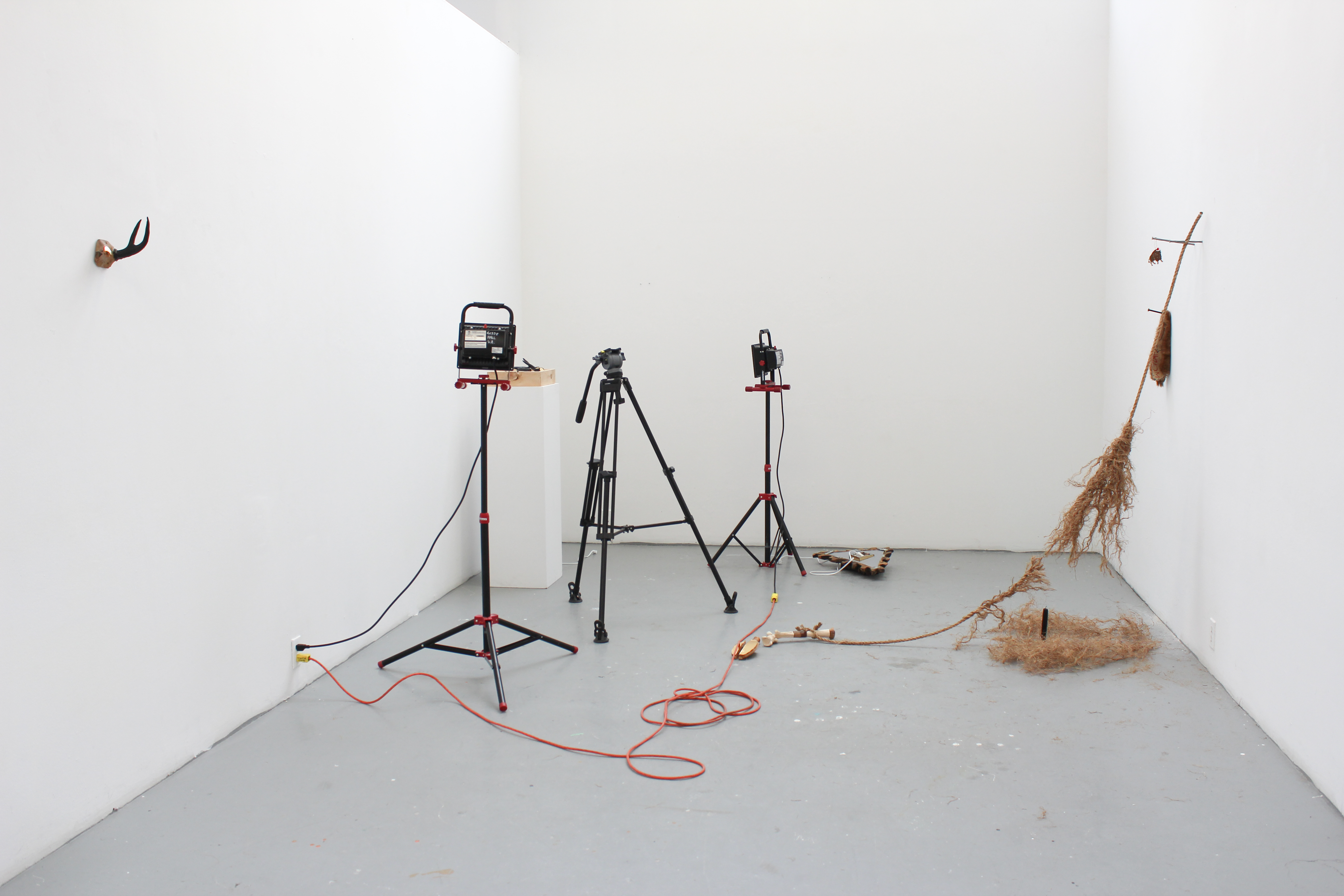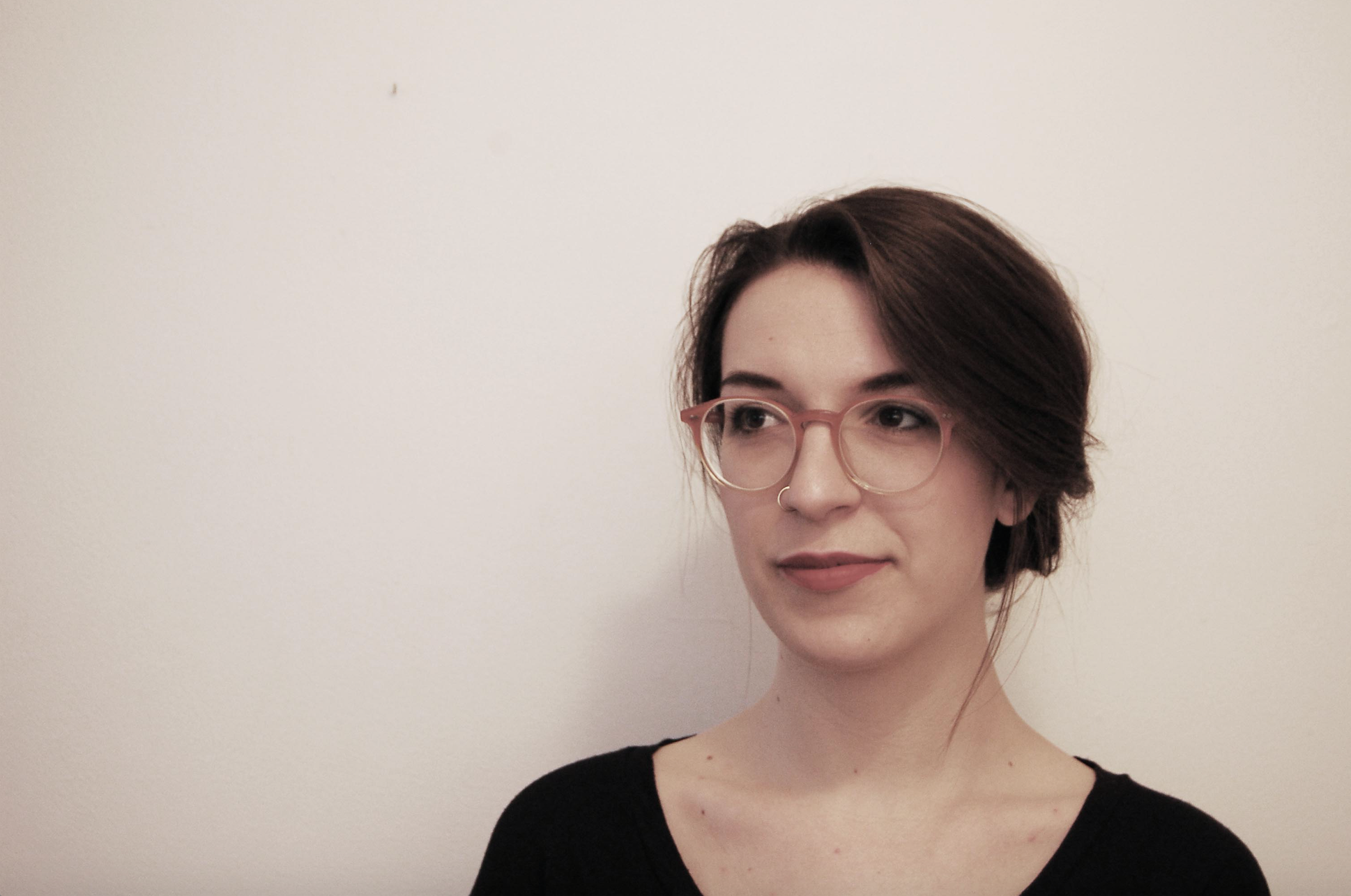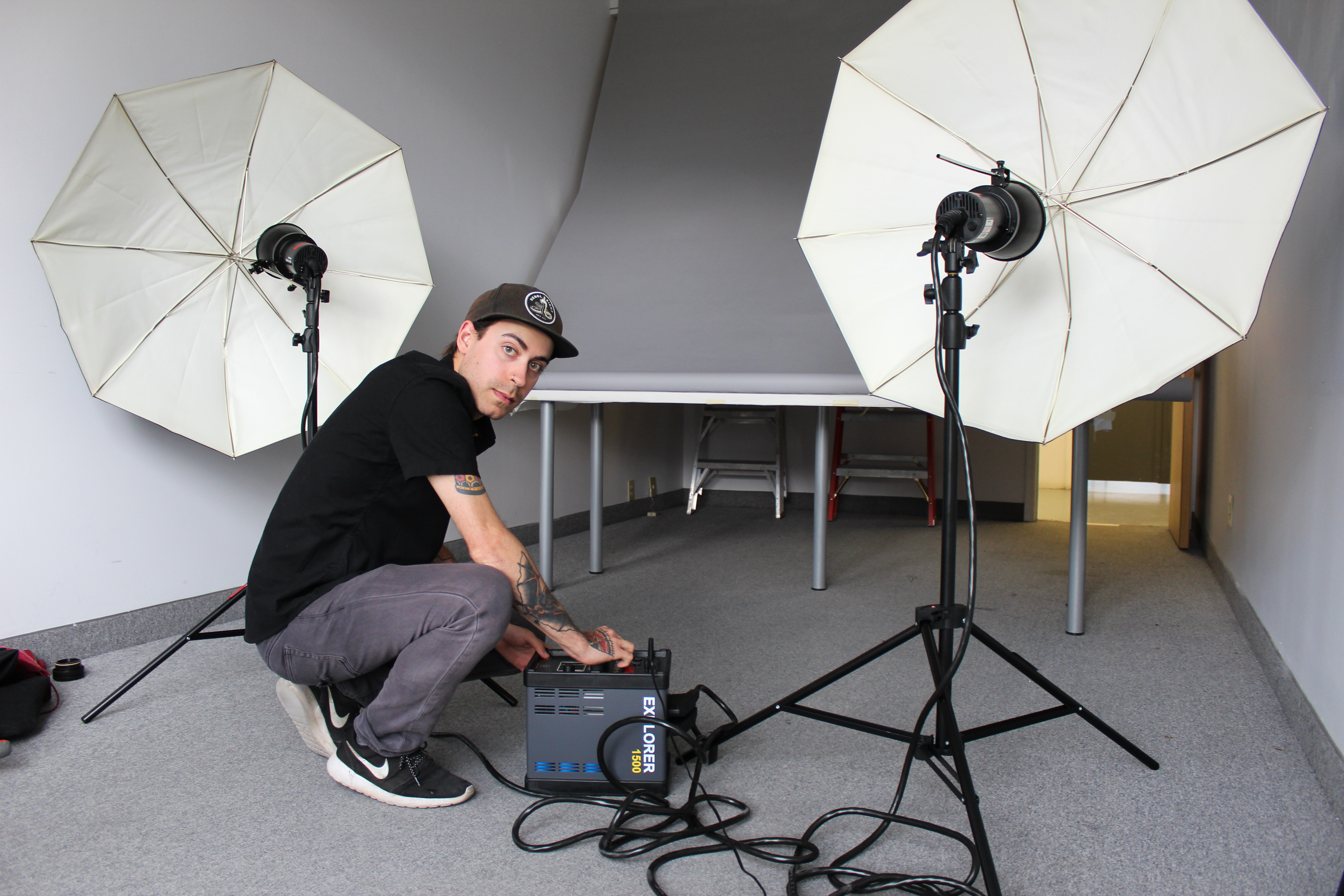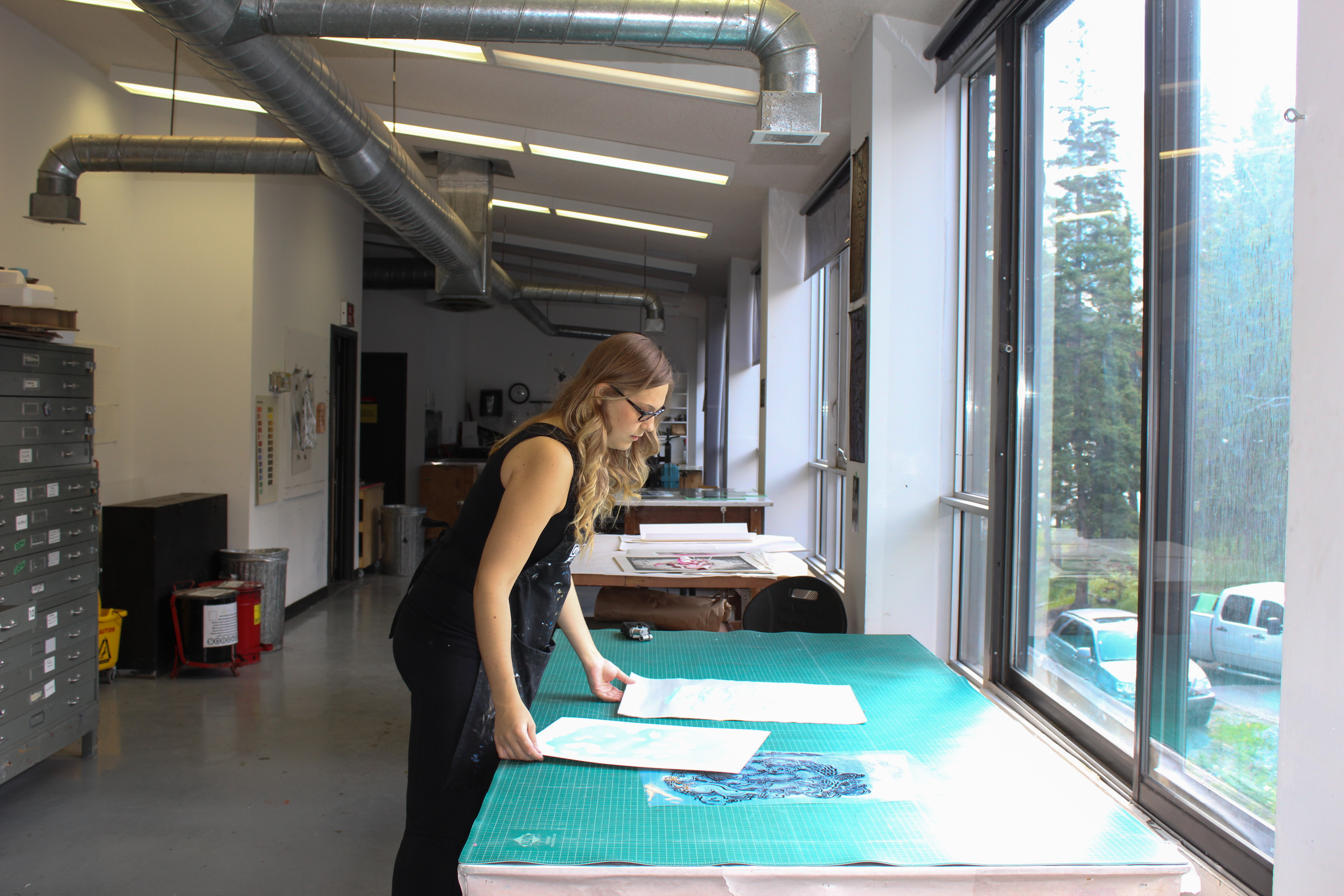What It's Like Being a Visual Arts Practicum

Banff Centre for Arts and Creativity is now accepting applications for various practicums in the Visual Arts department. The practicum positions are open to recent undergrad and graduate students and offer hands-on experience with tools, techniques and our world-renowned faculty at the Walter Phillips Gallery. You can apply to practicum programs in visual arts studio, curatorial practice, arts administration and research, and gallery installation. Here are some stories from a few of 2016’s practicum participants.
Check out some of the practicums with applications due July 27 and August 10, and apply!

Natasha Chaykowski, Curatorial Research Practicum
What’s involved in your practicum?
It depends on where we are in terms of the gallery schedule. We really go into high gear for install, but there’s also the research period leading up to that. And then there’s ongoing exhibition maintenance for whatever’s going on at the time, with tours and public programs. And of course, we have two exhibitions usually going at the same time, plus our permanent collection that’s on campus. It’s pretty diverse and kind of changes as we go through the year with different projects.
The Curatorial Research Practicum guarantees that you do a show with the program collection while you’re here.
What’s your favourite residency or exhibit from your time here?
As for projects, I really liked working on our last exhibition, things you can’t unthink. I was working alongside [Curator] Peta [Rake] for the show, with the theories and ideas that were underpinning it, taking that and thinking through how different ideas can be represented by different voices in the form of a catalogue. I got to choose writers to write about the different artworks, and to think about more experimental ways to write about the work. One of the writers submitted a poem about Eunice Luk’s work. It worked really well with the form of Eunice’s practice and her history of publishing.
What do you do in your personal practice?
I’m primarily a writer and have been doing editing and writing. My curatorial practice is pretty weird. I’m really into using tenets from early conceptual art in the '60s, as well as surrealist ideas and experimental approaches to exhibition making. The project that I’ve done here is called Some More or Less Distant Realities and I basically designed an exhibition using the format of surrealist exquisite corpse technique. It’s when you fold up a piece of paper and one person will start the drawing and they fold it over, and the next person continues the drawing. So on and so forth, but no one sees the whole drawing until it’s done.
So it’s kind of like this whole interesting collaborative technique that’s meant to tap into the collective conscious of the group and derive an image or a poem from a source other than a singular subjectivity. I used that idea and designed an exhibition with pieces from the permanent collection that works like that as a means to kind of query what it means to make curatorial decisions.
How has working at Banff Centre changed how you see your own work?
Curating is a little bit like a snowball effect. Starting a curatorial career in Canada is difficult. To be an independent curator, you need to be independently wealthy or really be a hustler. You can’t be in school to get grants; there are all these limitations. It takes some time being around and doing projects and meeting people. Being at Banff Centre and being able to curate an exhibition is a really wonderful opportunity as an emerging curator, because it does give you the opportunity to produce something concrete from its inception and conceptualization all the way to its install. Then you have the install shots. When you apply for grants or anything else, that’s really a valuable currency in the art world. I would say having had these exhibitions, and having the documentation to show people what you’re doing.

Frédéric Burrogano, Studio Practicum (Photography)
Can you describe your personal practice?
I work primarily with analogue photography doing landscape work. The work is concerned with national identities and the role landscape plays in its formation. The same way that you use propaganda to frame our national identity, you can frame a photograph. You would include and exclude elements and it creates something that's obviously not objective. It's not a factual document. So I aim to create a space, where the viewer is forced to re-examine his position concerning a concept. There's definitely a tension that gets created.
How has being at Banff Centre changed how you think about your own work?
It's probably the best experience I've ever had, honestly. Because of the vast array of artists coming here you always end up at some point during the residency explaining your work and since they all come from different backgrounds they always pitch in. Art is this flux of ideas, so it's always moving. Sometimes someone says something and you're like, "that's exactly what it is," or sometimes they draw something else and it pushes you to reevaluate how your work is projected and realize some of the of the unconscious themes in your work.
Before coming here I was only working with photography, since I’ve been here I've included a lot of new media. So I am currently working on some participatory websites with geo-specific information. Gaining new technical knowledge has also been a big part of that. I've also met some amazing people here that I've been collaborating with and that's had a huge impact on my practice as well.
What was your favourite residency to be a part of?
The Indigenous residency was I think my favourite one, as much for the participants, as for the programming which was really interesting. We had an array of people from all around the world and it shed light on some of the issues that aren't really spoken of out East (in Canada).
I think it was the unofficial after-hours—us drinking a beer at Maclab talking about stuff—that taught me the most. The community that you're working with becomes your reality during the time of the residency, so if you make friends with some of the artists, you really kind of blend in and it becomes a big part of your life for those six weeks, or four weeks.
What's special about being in Banff?
Banff is really boring, so there's no new restaurants to try, there's no bands coming in town, so since there's nothing to do you just always work. And I am happy about that, I came here and I was like, "I am going to work for a year on my art." It's like a one year residency, so I've been very active in the studio, which is great because you do have time, you have all this amazing equipment, so you're always going to come here and experiment. It's a different dynamic, so I've been reading a lot more as well and really kind of pushing myself to develop and grow.
What’s next for you?
I have an exhibition at artsPlace for some of the work that I've done here, so my first solo exhibition in Alberta; I am going to a residency in Berlin; and I am moving to the U.K. So much has come since I've been here, I don't know if it's the work that actually progressed or if it's the contacts, but my acceptance rate has doubled.
Last week of August I will also be in Peru for another residency. I am working with a coffee plantation, so the goal is to document the space and present this part of Latin America’s export identity somewhere else in Peru where they may not be as familiar with the manufacturing process.

Eva Przybyla, Studio Practicum (Printmaking)
What is your favourite memory of Banff Centre?
Probably when I taught a tarot card-making workshops at the Banff Centre library. There were a lot of really great conversations that went on, but I remember one particular participant was making her own version of a tarot card deck with chocolate and wine. It opened up a discussion about what women crave and different female stereotypes.
It was not something I expected to do when I got here. I came here under the impression that I would be doing mostly print work and just developing the more practical applications of my practice. But upon getting here you find out that you're able to explore all the different facets that you're interested in, whether it be teaching or sharing your interests with other people around the Centre.
Can you describe your personal practice?
I work a lot with women and their role in society. I look at the female perspective in terms of how they're portrayed in fairy tales and fables. A lot of the times they're considered this ambiguous moral-yet-immoral figure that's there to teach you a lesson, so I am curious as to why they’re so often portrayed as delinquent. The figures I study practice divination and witchcraft, practices that have a negative connotation attached to them, so I’m trying to understand why that imbalance exists in stories and why it's still significant in fables and storytelling today.
My printmaking has a fair bit of imagery sourced from fairy tales and old storybooks. I focus a lot, right now, on European fairy tales. I am also studying a wild woman archetype, where I’m exploring how today's society created this cookie-cutter form that women are supposed to fit into. Whereas, in reality if we want to be our healthiest and fullest selves we have to return to understanding this more wild and intuitive aspect of what we were.
How has being at Banff Centre changed how you think about your own work?
I've met and talked with a lot of different artists that work with feminism, fables, storytelling, and this idea of how to translate something that's already been so well documented into the present tense.
Artists that work in different mediums approach their practices in completely different manners than what you would anticipate. So being able to talk about what their references are, where they're getting their influences, how they're able to look at a piece of work has been invaluable. The discussions start to open up your own practice. It has been great being able to explore without feeling pressure to come up with a wonderful piece of art. There's a nice freedom in that.
Do you have a favourite residency?
I think Truth, Lies, Lore was my favourite. It was the first residency that I was here for and it was almost serendipitous that that was the first one that I was part of because they were focused on telling stories. It explored what's true and blurring the line of what we accept at face value. It was interesting to see an artist develop their practice further. Faculty for the residency, Kay Burns, who's known for her work with the “Flat Earth Society” has now expanded this primitive notion to include a museum.
If you're going into a museum and you're looking at all these artifacts, the assumption is that everything's true. Meanwhile you know that there's so many conflicting ideas based on the very museum that she has started. Playing with these wonderful juxtapositions paralleled my own interests, and just kind of warmed me up to this position as a practicum.
What’s next for you?
I am moving back to Ontario, which I am really excited for. There's a number of different groups/artist collectives that I've gotten a hold of in Toronto, as well as Kitchener, focusing on papermaking and printmaking that I never really got to explore before. Having left and now going back I feel like I have more of a connection with the people there. I have more to offer. I am hoping to slowly build a stronger artist collective in Kitchener that focuses on printmaking because a lot of the equipment isn't easily accessible.
What's special about being in Banff?
Magnus Tiesenhausen, Prepatorial Practicum
What practicum are you in and what’s involved?
I am one of two of the Walter Phillips Gallery Prepatorial Practicums. So we, myself and Morgan Bath, work in the back of the gallery. We do all of the aspects of installation of the gallery shows, everything that entails. It’s a morphing job; the requirements are different each time. Whatever the artist and the curator decide what needs to happen in the space, the prep team is responsible for taking care of that and make sure it comes together in time for the opening. Building walls, making 3D walls, putting drywall up, taking walls down actually, just reorganizing the whole space, painting, patching, hanging work, doing all the lighting, installing sound equipment, installing video equipment — it’s a very diverse job. And sometimes an unorthodox job. There’s lots of different types of setups that aren’t necessarily obvious ones.
What was your favourite installation that you worked on?
The show is called On Cohabitation by an artist called Yael Bartana. It’s three video works, one which is permanently screening in the front part of the gallery, and one which is divided between regular screenings and one occasional screening in the back. So the gallery is divided into two spaces, which are sort of functioning as theatre spaces, with large screens and sound systems. Everything is dark in the gallery. In the front room there are some hanging panels, which block sound and light and sort of guide people through the space.
I would say it’s definitely been my favourite just because of the amount of curveballs that have been involved. It’s really required a lot of problem solving skills and trying to imagine things that don’t necessarily have precedent. It’s definitely the best when it’s a very brain-active job. It’s been really interesting in that way.
What do you do in your personal practice?
I make techno music predominately. That’s the main part of my practice, making minimal dance music. I use all old hardware for it, so no computers are involved, it’s all just drum machines and synthesizers. That’s part of my practice, but also I keep a really constant journal and I do a lot of writing. I draw and I’m very focused on magic. It’s all kind of tied together in a confusing way.
How has working at Banff Centre changed how you see your own work?
It’s been really amazing to be able to work for an institution that deals with contemporary artists, and just being able to experience how different people want their work installed and how the curator wants the work installed. I’ve also been able to incur a lot of skills related to sculptural practices. Working with different tools and tools that I’ve never worked with before, and learning an established method of construction has been really cool. In terms of influencing my practice, building spaces has been really exciting, like watching the gallery change drastically from being one specific type of space for one work to being a completely different medium and feeling. So it kind of is a really intensive course in how to make installation an art, because it’s totally transforming the space every time.
What’s your favourite experience of being a practicum?
My favourite experience of being a practicum has been organizing parties called Physical Facilities for the resident artists, in my off hours. It’s been a really good way of fusing the two parts of my life together, the preparatory work and my dance music. It’s been a very amazing experience.
What’s special about being in Banff?
At Banff Centre, it’s really amazing to meet all the people who are coming through. There’s this constant flow of people coming from different backgrounds, making different types of art, who are just there and are just hanging around. You can just meet with them and do a studio visit if you want, and see what they’re up to. It creates a really rich experience for people who are doing a practicum here. I’d say that’s what’s my favourite thing about living here. It’s also amazing to be close to a lot of nature and be able to experience that element of sublime natural beauty.
What’s next?
I would love to continue in this line of work. Doing prep work is really fun and I hope to be able to continue doing that. I’m also looking forward to continuing my personal practice and hopefully doing some music and art.